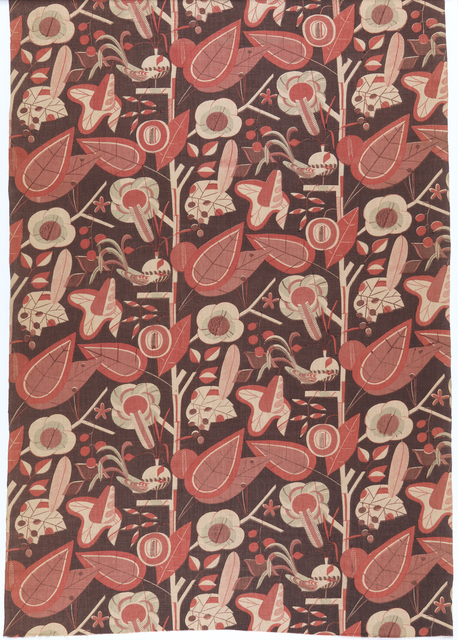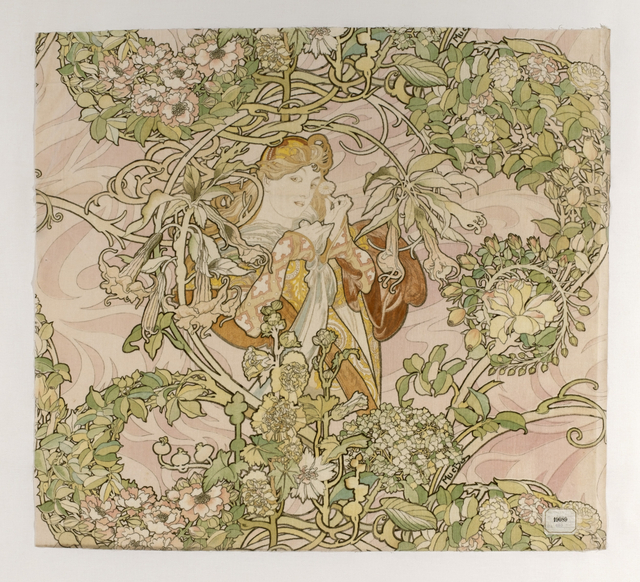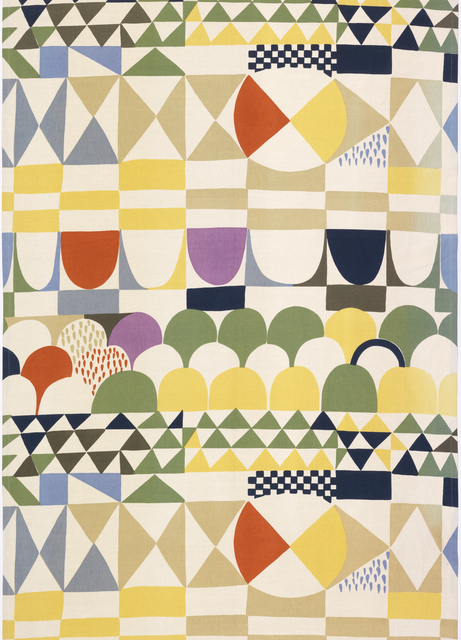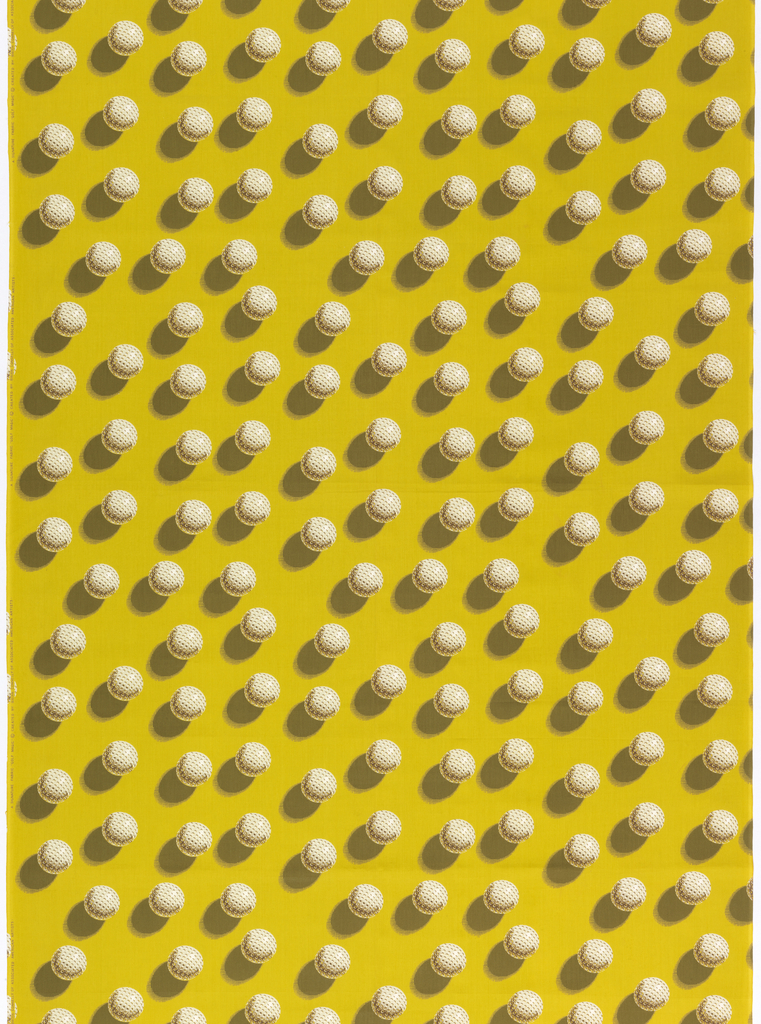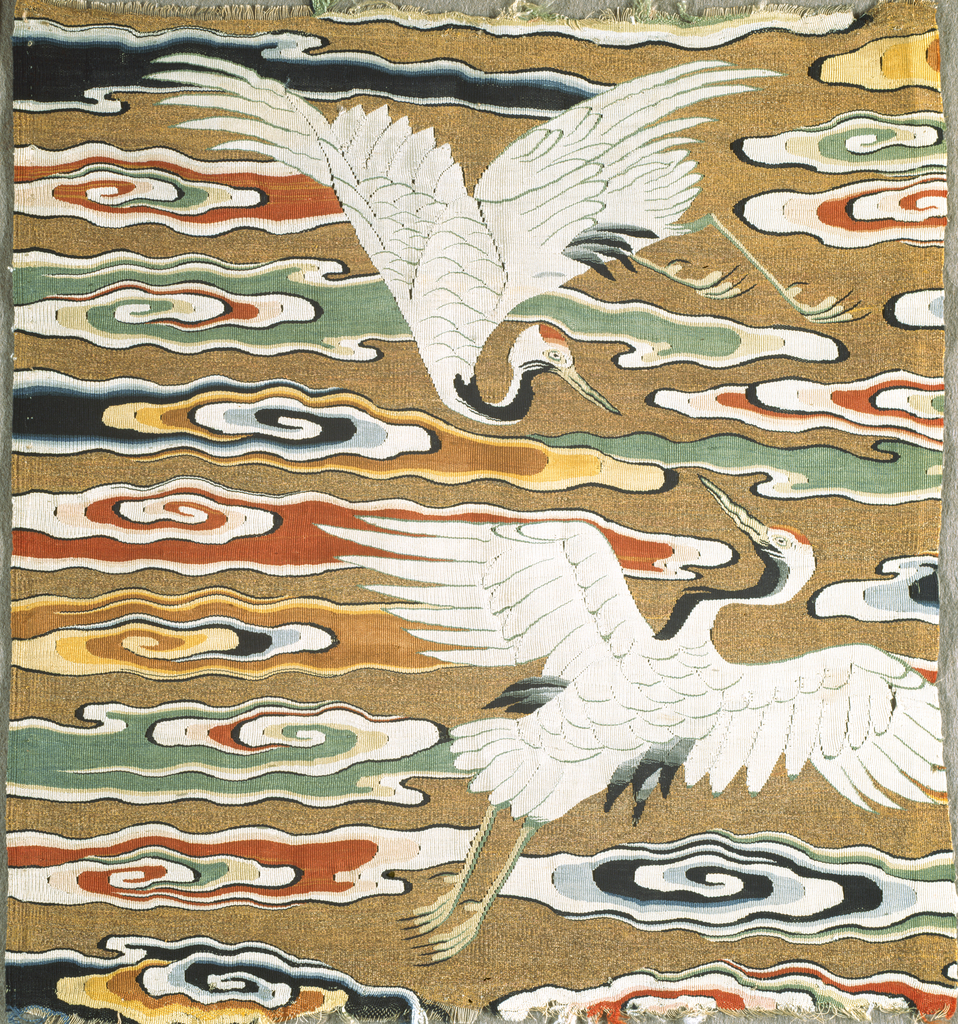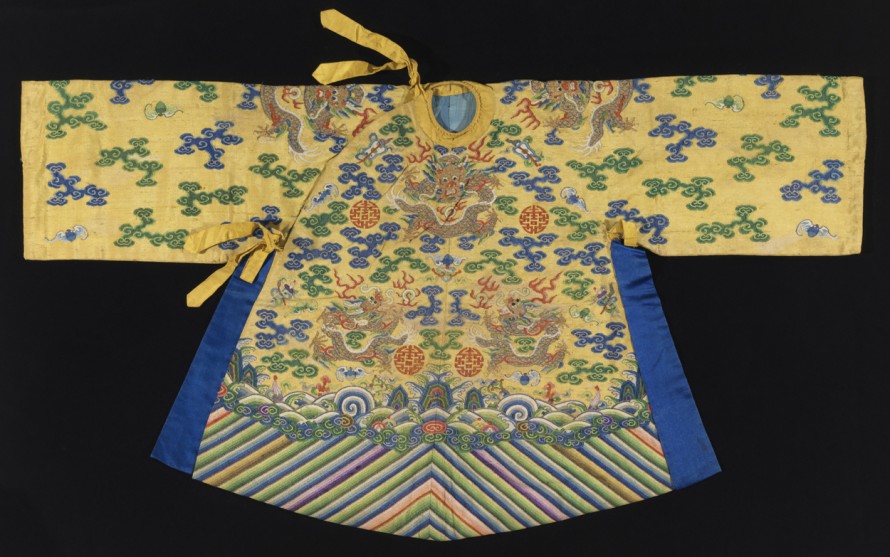This eighteenth-century French embroidered bed hanging has all the sumptuousness and curves one might expect from a Rococo textile. However, the symmetrical, repeating undulation of the branches is punctuated by specificity and variety discovered through close study and interest in the natural world and expressed through the visual language of luxury. Among the golden perches...
Josef Hillerbrand (1892-1981), was a German-born architect and painter who also designed textiles, as well as carpets, ceramics, glass, metalwork, furniture, lighting, and interiors. He received his formal training from the Kunstgewerbeschule (School of Arts and Crafts) in Munich, where in 1922 he was asked by Richard Rimmerschmid, a prominent Art Nouveau artist and designer,...
“Femme à Marguerite” or “Woman with a Daisy” was designed by Alphonse Maria Mucha, a fin-de-siecle artist perhaps most famous for his works on paper. Mucha was born in Moravia in 1860 and died in Czechoslovakia in 1939, however like a majority of his works, this fabric was designed in France around the turn of...
Upon hearing the words modern, modernism, or modernist design, what are your first thoughts? “Form follows function,” universal, structured, machines, red, yellow, blue, black, white, tubular steel, leather, Cubism, geometry, straight lines, circles, squares, triangles? What about knotted carpeting, irregular shapes and patterns, whimsy, a denial of the machine aesthetic, comfortable, cozy, eclectic, personal, humanistic,...
If you’re anything like me golf is not your forte, and well, neither is driving a golf cart. The only time I ever went golfing was with my dad, and I drove our cart through a pristine flower bed. Needless to say, I’ve not golfed since, but my dad and I still laugh about the...
Asia Week is in full swing! An annual event in New York City, Asia Week began last Friday, March 15th and runs through this Saturday, March 23rd . In an effort to support and celebrate Asian art both in the city and across the nation, galleries, auction houses, museums and cultural institutions in New York ...
According to the lunisolar Chinese calendar, the Year of the Dragon has come to a close and we are beginning the Year of the Snake. In honor of the Chinese New Year I present to you a very small Chinese robe from the collection of the Textiles Department. This late 18th century robe is made...

